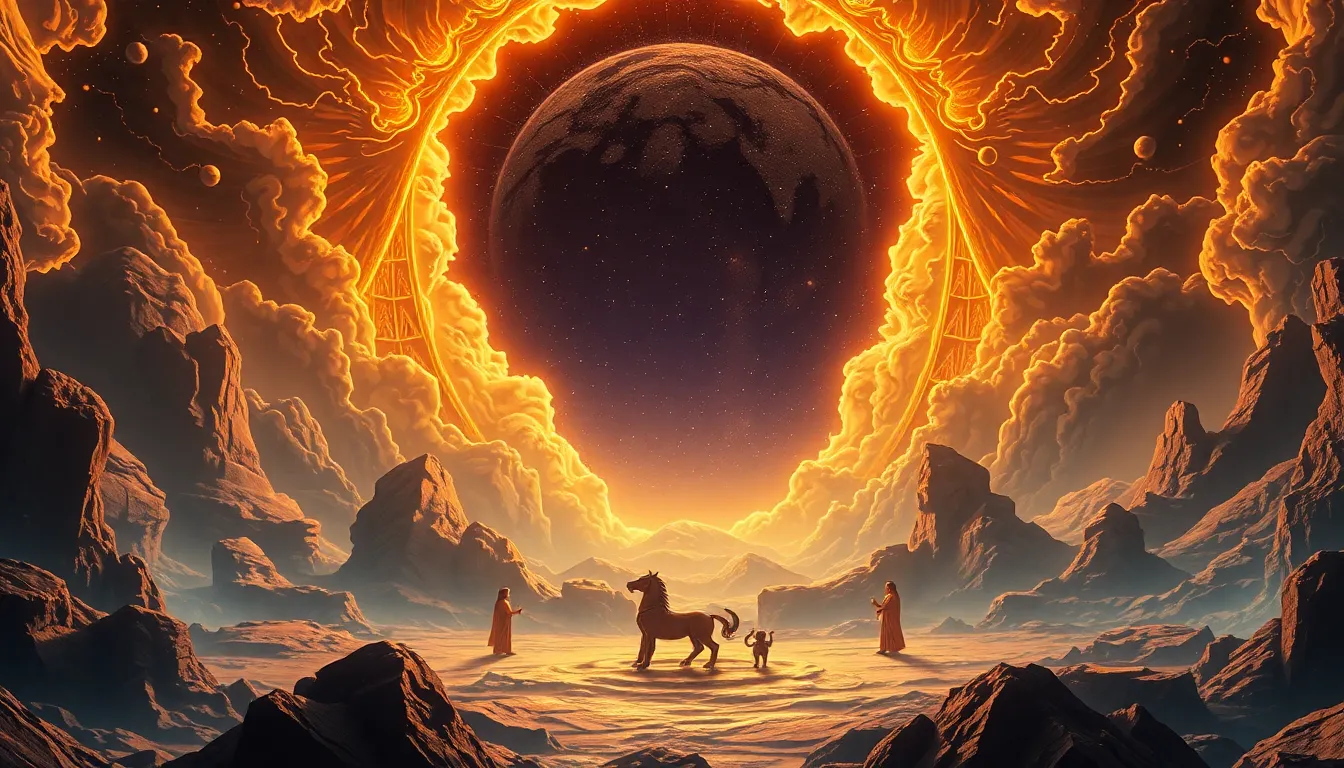The Creation of the World: Egyptian Myths of Cosmic Order
I. Introduction
Egyptian mythology is a rich tapestry of stories and beliefs that shaped the ancient civilization of Egypt. It serves not only as a record of the gods and their exploits but also as a framework for understanding the universe and humanity’s place within it.
The concept of cosmic order, known as Ma’at, is central to Egyptian thought. It embodies the principles of truth, balance, and justice, governing the cosmos and human society alike. This article aims to explore the intricate creation myths of ancient Egypt, their significance, and the key deities involved in the formation of the world.
II. The Importance of Creation Myths in Egyptian Culture
Creation myths were vital to the ancient Egyptians for several reasons:
- Understanding the Universe: These myths provided explanations for the origins of the world, the gods, and humanity, shaping their worldview.
- Connection to Daily Life: The myths influenced agricultural practices, seasonal cycles, and societal norms.
- Influence on Religion and Governance: Pharaohs often claimed divine lineage through these myths, reinforcing their authority and the importance of maintaining Ma’at.
III. Key Deities in Egyptian Creation Myths
Several deities play pivotal roles in the creation narratives of ancient Egypt:
- Atum: Known as the self-created god, Atum is often considered the first deity to exist, emerging from the chaos of the primordial waters.
- Ra: The sun god, Ra, is central to many creation stories, symbolizing light and life.
- Other Significant Deities: These include Ptah, the god of crafts and creation; Nun, the primordial waters; and Khnum, the potter god who shaped humans from clay.
IV. Different Creation Narratives
Egyptian creation myths are not monolithic; they vary by region and tradition. Here are three of the most notable:
A. The Heliopolitan Creation Myth
This myth originates from Heliopolis and revolves around Atum.
- Atum’s Emergence: Atum rises from the chaotic waters of Nun to create himself.
- Creation of Gods and Humans: Atum goes on to create the first gods, including Shu (air) and Tefnut (moisture), who then give birth to the earth (Geb) and sky (Nut), ultimately leading to the creation of humanity.
B. The Memphite Creation Myth
The Memphite version highlights Ptah’s creative power.
- Ptah’s Role: Ptah thinks the world into existence, showcasing the importance of thought in creation.
- Significance of Speech: Through his spoken word, Ptah brings forth all living things, emphasizing the power of language in Egyptian belief.
C. The Theban Creation Myth
This narrative centers on Amun, a god associated with hiddenness and mystery.
- Amun’s Hidden Nature: Amun is initially obscured and then emerges as a creator god.
- Connection to the Cosmos: Amun’s role is often linked to the heavens, reinforcing the belief that the cosmos itself was a manifestation of divine will.
V. The Concept of Ma’at and Cosmic Order
The concept of Ma’at is foundational in Egyptian thought:
- Definition and Significance: Ma’at represents truth, balance, and cosmic order, essential for the stability of the universe.
- Relationship Between Creation and Order: The act of creation itself was seen as a means of establishing Ma’at, where chaos was transformed into a structured world.
- Role in Maintaining Harmony: The pharaoh and the people were expected to uphold Ma’at to ensure the continued favor of the gods and the prosperity of the land.
VI. The Symbolism of the Creation Process
Egyptian mythology is rich in symbolism, particularly in the context of creation:
- Use of Symbols: Symbols such as the ankh (life), the scarab (rebirth), and the lotus (creation) play significant roles.
- Significance of Water, Chaos, and Light: Water symbolizes the potential for creation; chaos represents the state before order, and light signifies knowledge and life.
- Cyclical Process: Creation is viewed as cyclical, with the regeneration of life and the annual flooding of the Nile embodying this concept.
VII. The Legacy of Egyptian Creation Myths
The influence of Egyptian creation myths extends beyond their time:
- Influence on Later Cultures: Elements of these myths can be seen in subsequent cultures and religions, including aspects of Greco-Roman mythology.
- Continuation in Art and Literature: Many of these myths have been depicted in ancient art, temple inscriptions, and literature, preserving their legacy.
- Modern Interpretations: Today, scholars and enthusiasts study these myths for their insights into ancient thought and their relevance in contemporary discussions about creation and existence.
VIII. Conclusion
In summary, the creation myths of ancient Egypt provide a profound understanding of their worldview and the significance of cosmic order through Ma’at. These stories not only explain the origins of the universe and humanity but also reflect the values and beliefs that governed Egyptian society.
The enduring impact of these myths continues to resonate, offering insights into our own understanding of the cosmos and the human condition. Egyptian mythology remains a vital part of human culture, reminding us of the universal quest to comprehend our existence and the world around us.




